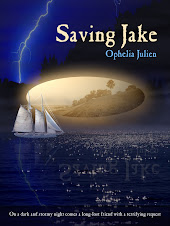We’ve all heard that
we shouldn’t judge a book by its cover. Well, how about by its title?
I already know the
same is true. If it weren’t, I wouldn’t have fallen head over heels for a book
titled The Shining. It’s a brilliant title, given the story, but without knowing the story ahead of time and having
no familiarity with the term, the title tells the potential reader nothing. I
think by the time the book debuted, Mr. King had already smashed through into
the bestseller stratosphere with both Carrie
and Salen’s Lot, so it didn’t matter.
But I’ve always wondered why he, or the publisher, or both, went that route
with the title. It doesn’t even hint at the dark and terror contained within
the book. Maybe that was the point?
Titles are something
I think about a lot, mostly because I struggle with trying to create them. To me, some titles hold the same astonishing magic as the
names of both racehorses and rock and roll bands. How creative do you have to
be to come up with some of those? I don’t have that talent and frequently wish
that I did.
Saving
Jake was
traditionally published, and the editor and I went back and forth about the
title for some time. My working title for the book was Ultimate Magic, and I liked it because it was actually pulled from
something Jake Holdridge says during the course of the story. My editor, however,
said that such a title would be misleading because using the word “magic” implied
a completely different genre. And when she explained it to me that way, I
realized she was right. But that left me without either a title or a clue. I
ran around and asked my husband, my sister, my friends, anyone who had read the
manuscript for help, and after all the lists of suggestions were put together, “Saving
Jake” popped up more than once. So there it was. But it took me years to become
accustomed to it. In my head, title book remained Ultimate Magic for years.
Now that I’m self-publishing,
titles are an even bigger struggle. I don’t have an editor working on this with
me, so the final decision for a title is mine, and so are the subsequent
mistakes. My first huge mistake, of course, was Haunted. I found out some time after the book hit the Amazon
listings that I should have checked to see if any other books had the same
title. HA! I just looked on Amazon and went through twenty pages (out of
seventy-five) of books either titled “Haunted,” or with that word in the title,
and still didn’t find my book. So I learned to check subsequent titles and I might have said I was getting better at it, but She Weeps doesn’t come up
right away in a search. These Living Eyes
is about number five on its page, so at least readers can find it pretty
quickly. But with the exception of Touching
Shadow, Stealing Light (the only book with that name! YAY!), anyone
searching for my books would need to look not only for the title, but for my
name as well, in order to find them. Sigh.
So not only do I labor
over trying to come up with a catchy title, I also have to make sure are that
it will show up when researched without the additional information of my name.
None of this cleverness comes easily to me, which is why my working titles are
always numeric. Book Six, Book Seven, etc. If I were a quirky rock star, I
could probably get away with those as actual titles, but since I’m in the
business of book writing, I don’t think that will exactly work. Well, it will
work for those who read me regularly, but I don’t know about attracting new readers.
Oh, and there’s the
cover art, too. I remember a couple of years ago when I told my long-suffering
cover artist (the very talented Carmen Elliot) that my new title was going to
be four words long, as opposed to my usual one or two—or possibly three—words,
and asked her to fit that on the front cover in addition to the required
gravestones, my name, and the name of the series. She made an executive
decision and jettisoned an entire cemetery, as well as the series name, in
order to make it fit. But she was right. The cover, featuring a solitary
gravestone angel, is fantastic. I am currently working on Book Seven (amazing
title right there, don’t you think?) and I gave her a few bits of information
regarding the content so she can start thinking about what to do with this one.
Can’t wait to see it. Too bad I haven’t finished writing the book yet!
But it’s just as well
since I have no idea what on earth I’m going to call it. I guess I could go for
transparency and call it “Cassie and Michael See a Ghost” but I don’t know what
Carmen would do with that many words.
On the other hand, I
bet there isn’t any other book on Amazon with that particular title.






